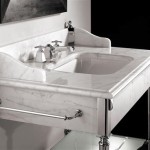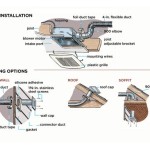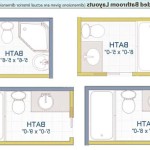How to Fill the Gap Between a Bathroom Cabinet and Wall
A gap between a bathroom cabinet and the wall can be an eyesore, compromising the overall aesthetic of your bathroom. This gap can also be a haven for dust and grime, making it challenging to keep your bathroom truly clean. Fortunately, filling these gaps is a relatively straightforward DIY project that can be accomplished with the right tools and materials. This article will guide you through the process of successfully filling the gap between your bathroom cabinet and the wall.
1. Assess the Gap and Choose the Right Filler
The first step involves assessing the size and nature of the gap. Small gaps, less than ¼ inch, can be filled with a flexible caulk. For larger gaps, you might require a more substantial filler like expanding foam or wood filler.
For smaller gaps, choose a silicone caulk specifically designed for bathrooms. These caulks are resistant to mildew and moisture, crucial for maintaining a clean and hygienic bathroom environment. For larger gaps, consider expanding foam. This expanding foam will fill the entire gap, providing a solid foundation for future finishing. However, ensure the foam is specifically designed for bathrooms to prevent the growth of mold and mildew.
For gaps that require a more precisely shaped fill, wood filler may be the ideal solution. Wood filler is available in various formulas, including those specifically designed for bathrooms. Ensure you choose a formula suitable for your specific application, considering factors like the material of your cabinet and the color of your wall.
2. Prepare the Surfaces for Filling
Before you start filling the gap, it is crucial to prepare the surfaces for optimal adhesion. This involves cleaning the surfaces thoroughly to remove any dirt, dust, or debris that might hinder the filler's bond.
Use a damp cloth to wipe down both the cabinet and the wall, paying special attention to the edges of the gap. Allow the surfaces to dry completely before proceeding to the next step.
For larger gaps, consider using a utility knife or a scraper to remove any loose or flaking paint or wallpaper from the surrounding area. This will create a clean and smooth surface for the filler to adhere to.
3. Fill the Gap with the Chosen Material
Once you have prepared the surfaces, you can begin filling the gap with the chosen material. For caulk, use a caulk gun to apply the sealant evenly along the gap, ensuring a smooth and continuous bead.
For expanding foam, follow the manufacturer's instructions carefully. Typically, this involves shaking the can well and applying the foam in a controlled manner, ensuring the foam fills the gap completely. Avoid overfilling the gap, as the expanding foam can cause pressure and potential damage. Allow the foam to cure completely before proceeding to the next step.
For wood filler, use a putty knife to apply the filler evenly into the gap, ensuring it reaches all corners and crevices. Smooth the filler with the putty knife, creating a seamless transition between the cabinet and the wall. Allow the wood filler to dry completely according to the manufacturer's instructions.
4. Finishing Touches
After the filler has dried completely, you may need to smooth and refine it for a flawless finish. For caulk, use a damp finger or a caulk tool to smooth the bead, removing any excess and creating a smooth transition.
For expanding foam, use a utility knife to trim off any excess foam that may have expanded beyond the gap. You can then sand the foam to achieve a smooth surface.
For wood filler, use fine-grit sandpaper to sand the filler, removing any imperfections and blending it seamlessly with the surrounding surface. Finally, prime and paint the filled area to match the existing wall color, creating a uniform and aesthetically pleasing finish.
By following these steps, you can effectively fill the gap between your bathroom cabinet and the wall, enhancing the look and functionality of your bathroom. The process requires careful attention to detail and the use of appropriate materials, ensuring a smooth, long-lasting, and water-resistant finish.

4 Ways To Fix A Gap Between Vanity And Wall

How To Fill Gap Between Vanity And Wall 7 Solutions
:max_bytes(150000):strip_icc()/4-filler_strip-56a4a2725f9b58b7d0d7ee38.jpg?strip=all)
Cabinets Level Wall Is Not Wood Dallas Makerspace Talk

4 Ways To Fix A Gap Between Vanity And Wall

Big Gap Between Vanity And Wall

How To Fill Gap Between Vanity And Wall

How To Fill The Gap Between Vanity And Wall A Detailed Guide Funktional Home

How To Fix This Gap Between Vanity And Wall Backsplash Countertop Bathroom Sink
Gap Between Wall And Bathroom Vanity Wondering If I Can Tile Ceramic Advice Forums John Bridge

How To Fill A Gap Between Vanity And Side Wall Baseboard Issue Too
Related Posts







